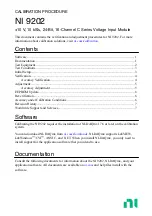
© 2014 SPX CORPORATION
36
Form No. 1000773
Rev. 0 August 12, 2014
SET UP AND START UP CONTINUED
• The load lowering valve is located by
the Electric Motor valves stacked on top
of the reservoir. It is used to control the
rate of descent in lowering the load.The
initial set is 0.2 open.
• Close the adjustments completely then
reopen one 16th to one 8th turn, this
should be used as a baseline from
which to observe lowering performance.
• If Lowering speed is too slow, open
the adjustments by turning the handle
counter-clockwise in one 16th turn
increments.
ALARMS AND HOW TO RESET
•
Emergency E-stop button Alarm
- pull up on E-Stop Button to ensure it is not engaged,
and then press the
BLACK
reset button right below the E-stop button.
•
Wire Break Encoder Alarm
- review the alarm to determine which cylinder exhibits this
alarm. Check to ensure that the wire is attached to the sensor and the face plate
attachment point for the appropriate cylinder number. If okay, press the blue
RESET
button
on bottom right of home page. If alarm still exists, replace the cable.
•
Wire Break Pressure Sensor Alarm
- review the alarm to determine which cylinder ex
-
hibits this alarm. Check to ensure that the wire is attached to the pressure transducer for
the appropriate cylinder number. If okay, press the blue
RESET
button on bottom right of
home page. If alarm still exists, contact Engineering - this may be issue in Electrical Control
Cabinet.
•
Pump Overpressure Alarm
- review the alarm to determine which cylinder and check the
load shown on the screen is not higher than the maximum load input as a variable. Press
the blue
RESET
button to erase the alarm. If the alarm still exists, review maximum load
variable for correct data.
•
Overload Hydraulic Pump Alarm (cont.)
- the overload relay/breaker inside the Electrical
Control unit may have “tripped”.













































